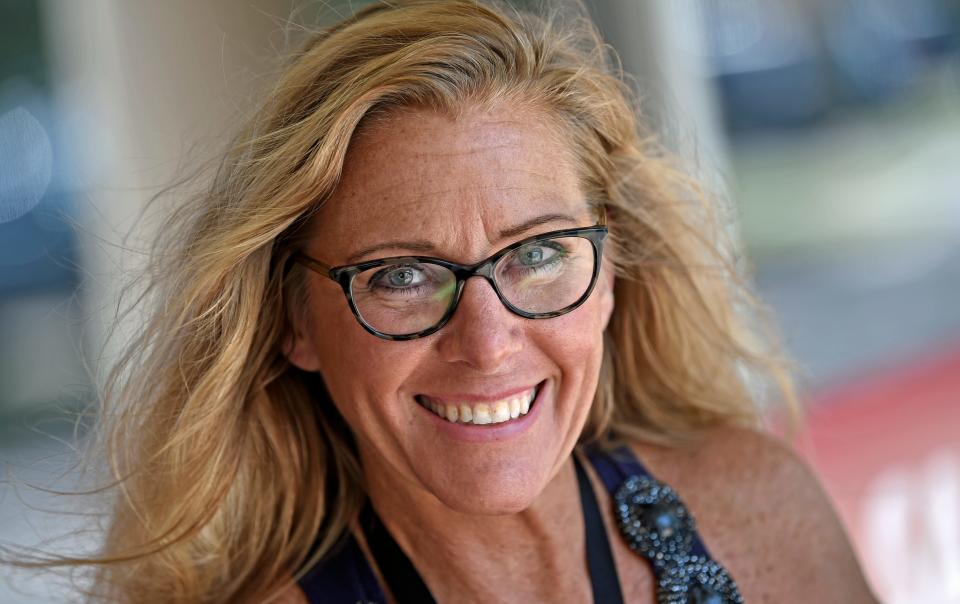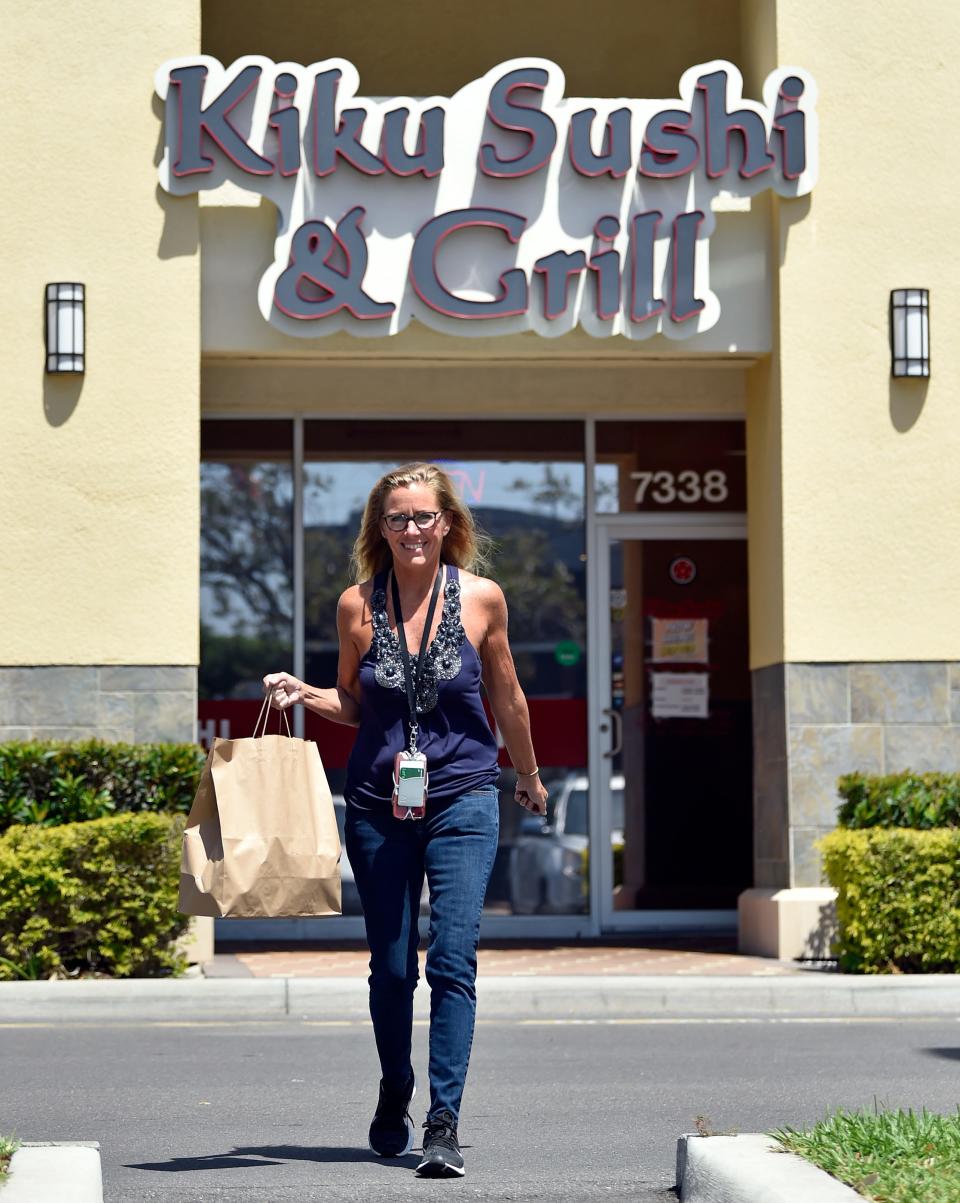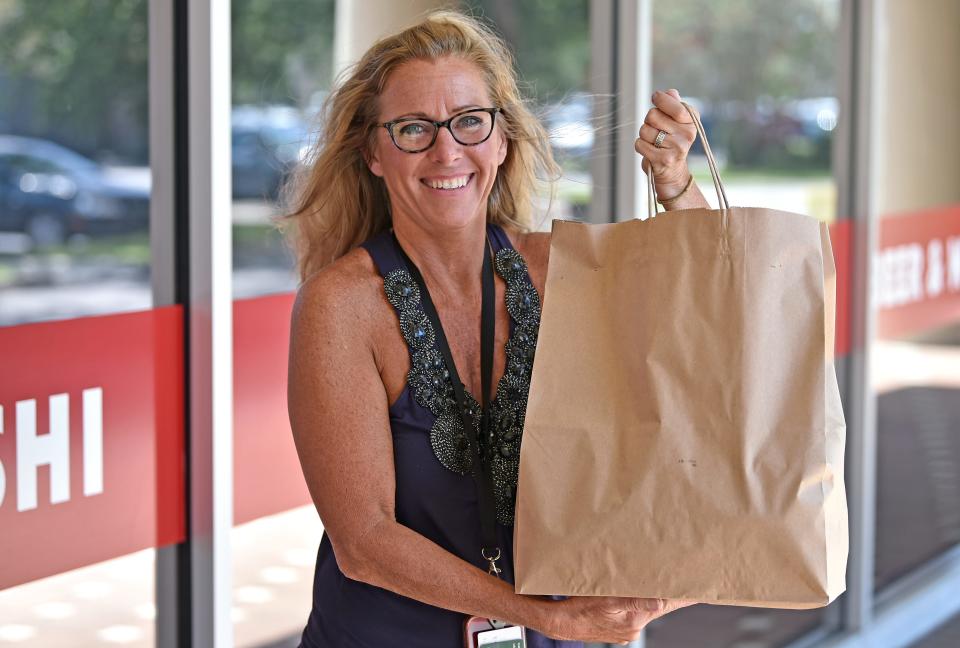Gig workers on front lines of economy feeling seismic transition
Christopher Evans is always searching for a unicorn.
Sitting at home in Palmetto, or in his car outside of big box stores and supermarkets, Evans repeatedly refreshes the Instacart Shopper. Across his screen, batches of groceries ripe for delivery will pop up, offering $20 here or $30 there. But what he and other independent contractor shoppers are really looking for are those rare beasts, those batches so special and high in value that they've reached otherworldly status.
"In the industry we call them 'unicorns,' a monster, a batch that pays like $100 for 50 items," Evans said. "It's something you hear about, but you never actually see."

It may sound thankless, tedious and time-consuming — and it can be — but such is the daily grind for the workers who make their living on app-based platforms like Instacart. Often plugged into multiple different delivery platforms at once, these independent contractors collect order after order seeking to maximize their earnings on any given day.
As supply chain issues plague the country and businesses including traditional restaurants and fast-food eateries struggle to find adequate staff, gig workers are directly feeling the effects.
They wait longer for food orders to be completed. They scramble to communicate with customers when a restaurant or grocery store runs out of something. They have to be conscious of how the rise in gas prices across the country factor into their bottom line. And they have to do all of this without the safety net of guaranteed wages or health care benefits - although some said the complete flexibility gig jobs offer more than makes up for that.
On top of that, they have to compete with one another for the same orders and, in some cases, compete with third-party bot apps that snatch up high-ticket orders before any human can get to them. But several gig workers said the flexibility the job offers, plus the fact that it's not a traditional 9-5 job, served them well.
"It's such a heterogeneous sector that there's not one single type of person — not one single type of trend you see," Erin Hatton, an associate professor of sociology and expert on labor and the gig economy at the State University of New York at Buffalo, said.
The gig economy's reach
Short-term work based on individual tasks has existed since way before the internet, through freelancing and day labor, Hatton said, but the launch of companies like Uber, Lyft and Instacart transformed it to the gig economy of today.
Workers log into an app, whether it's Uber, DoorDash or Amazon Flex, and search for orders or shifts. Some apps, like Instacart, tell workers the total amount that they'll make before they accept an order, including tips, whereas others like Shipt do not.
There are two main types of gig workers, Hatton said. The first is full-time, who relies solely on orders for his or her income. They may have a disability that precludes a 9-5 job -- Evans is an example of this -- or something else preventing them from working set hours daily.
The other has a full-time job and works the apps for extra money, Hatton said — the type of person who can choose to cut back when gas prices are too high because it's not their main source of income.
More in the job market: Sarasota-Manatee unemployment dips under 3%
Economic outlook: As fuel costs rise, how will it impact the Sarasota-Manatee economy?
An August 2021 study of the gig economy from the Pew Research Center found that 68% of people who had worked app-based jobs over the year before did so to earn extra money, while 31% used them as their main source of income.
Overall, about 16% of Americans have earned money through an online gig platform at some point, the Pew survey said. Researchers said the platforms added many new workers when COVID-19 hit, but companies don't make these numbers publicly available and it's unclear how many of them stuck around two years later.
As of the fourth quarter of 2021, Uber had 4.4 million drivers and delivery people around the world, company spokesman Javier Correoso told the Herald-Tribune via email. The pandemic accelerated the growth of the company's delivery business, which was half of its total revenue in the last months of 2021, Correoso said.
Most of Uber's drivers and couriers — 90% — work on the platform fewer than 40 hours per week. More than 60% drive fewer than 20 hours per week and more than 40% drive fewer than 10, he said.
At the time of the survey, 9% of U.S. adults said they were current or past gig workers, meaning they had earned money though an online platform at some point over the previous 12 months. Three in 10 said it was their main job over the previous year, and just 8% said they spend more than 30 hours working on the platforms per week. Also, 23% said they sometimes don't do the job at all in a week.
Gas prices siphon profits
Jonathan Oldano of Bradenton was an Uber driver for awhile before COVID, but he decided to quit once the pandemic hit, mainly for safety reasons. After a period of unemployment Oldano found a 9-5 job that he kept until the company went out of business in March.
Even though gas prices are a lot higher than they were the last time he was driving, Oldano said he's thinking about going back to Uber, just to hold him over until he can find a new job. But the $0.55 per trip fuel surcharge Uber offers its drivers is "a joke," he said.
"Uber gives me the freedom to make my own schedule, but I’ve heard that the fares have dropped for drivers so maybe it won’t be as good this time around," Oldano said. "(It's) a good way to make money in the meantime, even though it may be tougher nowadays."
Betsy Bray, a gig worker based in northwest Bradenton, said that about 10% of what she earns goes back into her gas tank, plus car maintenance and repairs.
The costs of working in the gig economy aren't always clear up front, Hatton said. A lot of times, people are sold on what they can earn and achieve under the promise of being able to make their own schedules, only to get frustrated later.

"Over and over again people go into those lines of work go in with real optimism, but as time goes on they become more and more pessimistic about what this job is doing for them," she said. "Those costs that are initially not so visible are going to become visible, and going to become real burdens on them."
Sherri Wheeler Cliburn of Sarasota was in charge of a local Facebook group for Instacart Shoppers until she quit the platform altogether in February 2021. The pay was no longer sustainable, Cliburn said, and third-party bot apps that scoop up high-ticket orders before any person could see them were getting out of control.
Ultimately, Cliburn said she quit because she was fed up. Instacart started sending her to two different stores. Plus she felt she was getting physically worn out by the job.
Over the past few years, Cliburn tried to organize her fellow shoppers into striking when Instacart changed its base pay. But it was difficult. Even if workers want higher pay or benefits, they can't legally form a union to try to promote their interests. They can try to strike by turning off the app for the day, but it's hard to get everyone on the same page.

"We’ve tried to do fair pay, but you just can't get people on board," Cliburn said. "They'd rather work than go on strike to make better pay."
Most people dissatisfied with their wages on gig platforms usually just stop working, Hatton said.
"The most obvious option is to just look for another job," she said. "Fighting to change is such a monumental task. It's all the more difficult when these workers don't know each other -- they're atomized, in separate cars, with no single workplace or cafeteria. They can't discuss work and working conditions."
Making gig work, work
Bray has been working gig jobs for five years. She started after seeing an ad on Facebook about grocery shopping and delivery for Shipt. It worked well for Bray, who needed work that would fit around her daughter's school pick-up time.
Through Shipt, she found out about other apps, including Uber Eats, DoorDash, Grubhub and Instacart. Most gig workers are active on multiple apps, because it's nearly impossible to make a living through just one.
Bray sees a lot of delays with food preparation and even canceled orders because of supply chain issues and tough staffing at the restaurants. She can tell that restaurant workers are stressed now.
"I went into Taco Bell one time to pick up an Uber Eats order, and the manager was cussing and slamming food in the garbage can because it was wrong and she was frustrated," Bray said. "It was taking forever, and I ended up canceling the order because they had extreme chaos going on in there, and I wasn’t getting my delivery so I had to move on because it’s not worth my time to wait."
Typically, Bray makes most of her money through Instacart, and she picks up smaller DoorDash and Uber Eats orders in between. At one point, she tried out Amazon Flex, but that required her to drive to the company's Ruskin distribution center without knowing the delivery locations until she got her boxes. She instead prefers to drive around Bradenton.
Bray likes the flexibility of gig work. Plus, when platforms offer low prices or bad tips for an order, you can just choose to not take them, she said. But at the same time, she thinks that the pay should come out to a minimum wage like average.
She said she doesn't want to be a full-time employee.
"It’s better being an independent contractor where I can pick and choose which orders I want to take across several platforms," Bray said. "If I am an employee of one platform, then I would only be able to do that one platform and I would not be able to refuse orders, because they’re paying an hourly, so I wouldn’t get to pick and choose which orders I want to take."
Support local journalism with a digital subscription to the Herald Tribune.
This article originally appeared on Sarasota Herald-Tribune: Sarasota-Manatee gig workers feel first hand effects of economy in flux

